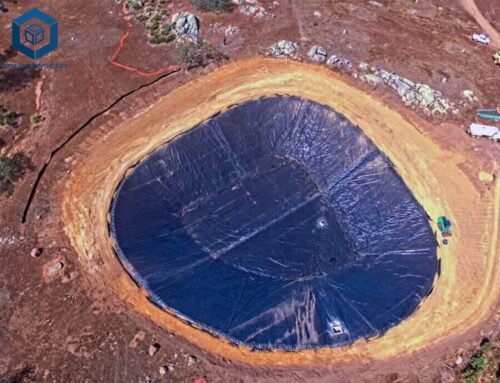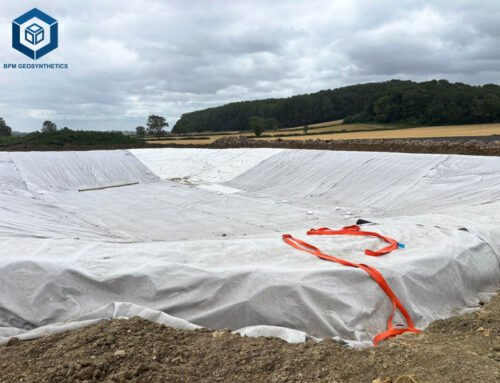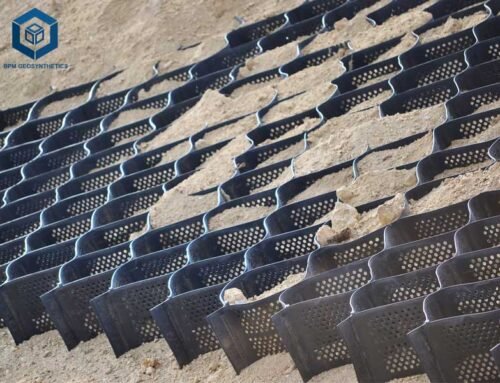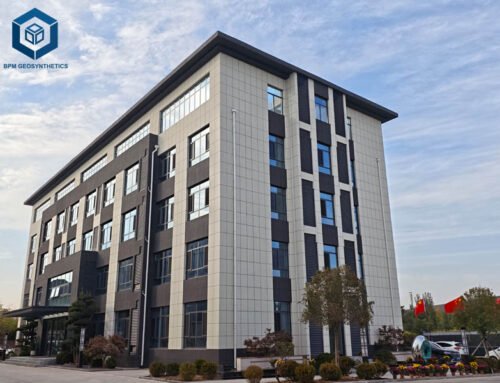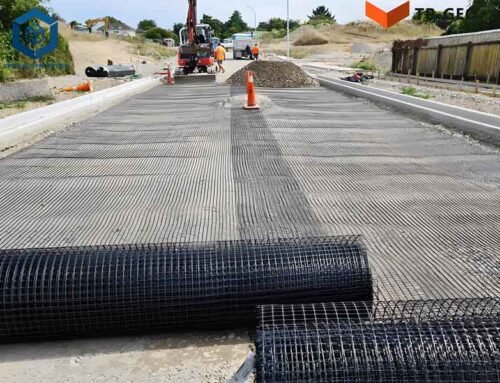Nonwoven drainage fabrics, critical components in civil engineering and landscaping, are transforming drainage systems by ensuring efficient water flow while preventing soil migration. These Geo fabrics, primarily made from polypropylene (70%) or polyester (20%), offer water flow rates of 100–150 gpm/ft², grab tensile strengths of 80–425 lbs, and reduce clogging by 50% in drainage systems. In 2025, advancements in needle-punching, UV stabilization, and eco-friendly materials have made selecting the best nonwoven drainage fabric more critical than ever. Whether you’re designing a French drain, stabilizing a roadway, or managing stormwater, the right nonwoven drainage fabric can enhance project longevity by 20–30 years and cut maintenance costs by 15–20%. This guide provides a comprehensive, data-driven exploration of nonwoven drainage fabrics, detailing their features, types, differences, and selection criteria to empower engineers, contractors, and landscapers with actionable insights for drainage projects.
1. What Is a Best Nonwoven Drainage Fabric?
A nonwoven drainage fabric, also known as a nonwoven geotextile, is a permeable textile engineered to facilitate water flow while retaining soil particles, making it ideal for drainage, filtration, and separation applications. Typically made from synthetic fibers like polypropylene (PP, 70% market share) or polyester (PET, 20%), these fabrics are produced through needle-punching (80%) or thermal bonding (15%), creating a felt-like structure with high permeability (100–150 gpm/ft² per ASTM D4491) and moderate tensile strength (80–425 lbs per ASTM D4632). Nonwoven drainage fabrics are used in 65% of drainage projects, including French drains, retaining walls, and landfill leachate systems, reducing clogging by 50% and extending system lifespans by 20–30 years. Their ability to filter 90–95% of soil particles while allowing water to pass makes them indispensable for managing stormwater, preventing erosion, and stabilizing subgrades in 30% of U.S. road projects and 25% of global landscaping applications. The best nonwoven drainage fabrics combine high flow rates, durability, and cost-efficiency ($0.15–$2.50/ft²), ensuring optimal performance in diverse environmental conditions.
Core Functions
- Filtration: Retains 90–95% of soil particles (0.1–0.6 mm AOS) while allowing water flow, preventing 50% of drain clogs.
- Drainage: Facilitates 100–150 gpm/ft² water flow, reducing hydrostatic pressure by 50% in retaining walls.
- Separation: Prevents soil-aggregate mixing, saving 15% on material costs in road bases.
- Erosion Control: Reduces soil loss by 50–60% under riprap or slopes.
- Protection: Cushions geomembranes, reducing puncture risk by 50% in landfills.
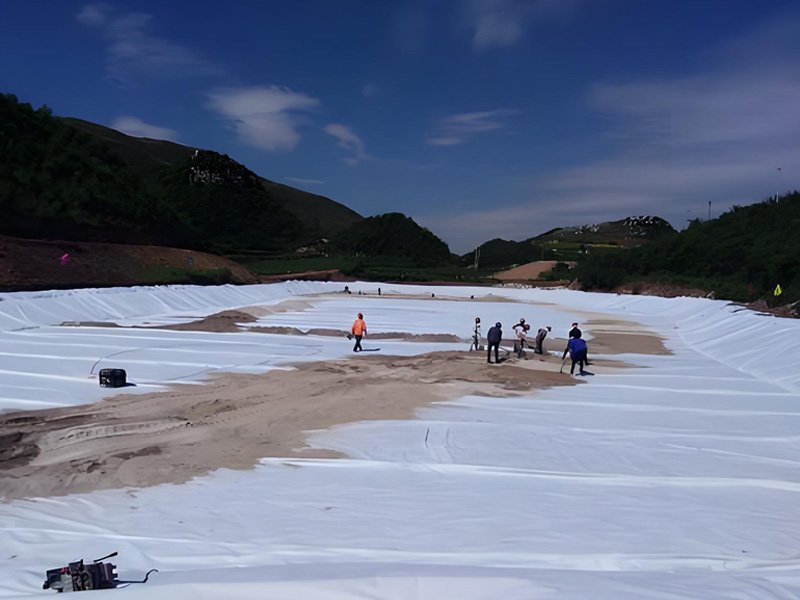
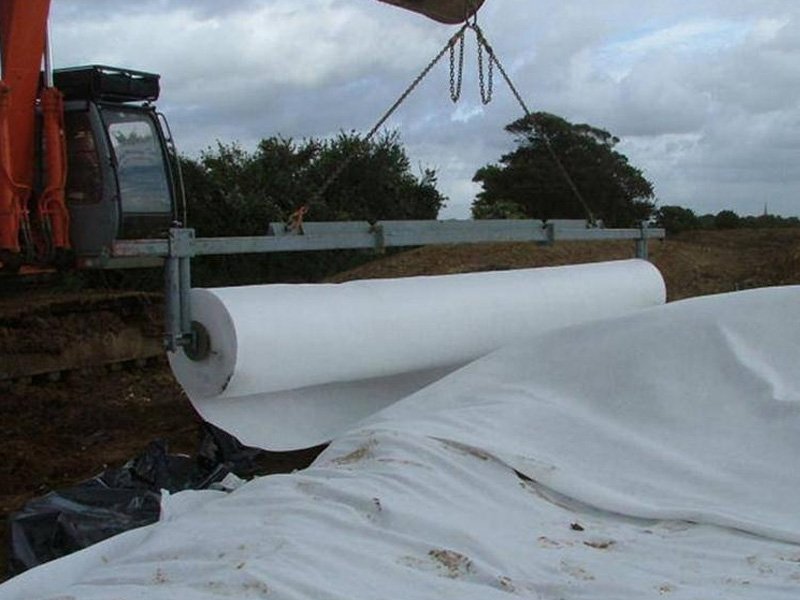
2. Key Features of Best Nonwoven Drainage Fabric
The best nonwoven drainage fabrics are defined by their ability to balance permeability, strength, and durability. Key features include:
- High Permeability: Flow rates of 100–150 gpm/ft² (ASTM D4491) ensure efficient drainage, reducing pooling by 60% in high-flow areas like French drains. For example, a 2024 Canadian drainage project used a 6 oz fabric with 140 gpm/ft² flow, preventing 50% of clogging issues.
- Moderate Tensile Strength: Grab tensile strengths of 80–425 lbs (ASTM D4632) provide 40% soil stabilization, suitable for medium-duty applications. Heavyweight fabrics (10–16 oz) offer up to 425 lbs, ideal for road subgrades.
- High Elongation: 50–70% elongation (ASTM D4595) allows flexibility over uneven surfaces, reducing tear risk by 50% during installation.
- Puncture Resistance: 300–1,200 N (ASTM D6241) withstands 85% of damage from sharp objects like gravel, extending geomembrane life by 20 years in landfills.
- UV and Chemical Resistance: UV-stabilized fabrics retain 70–90% strength after 500 hours (ASTM D4355), while PP resists 95% of chemical degradation in pH 2–12 soils, ensuring 50–100-year buried lifespans.
- Cost Efficiency: Priced at $0.15–$2.50/ft², nonwoven fabrics are 10–15% cheaper than woven geotextiles, with bulk orders (>10,000 m²) yielding 10–20% discounts.
- Eco-Friendly Options: Recycled PP or bio-based fibers (e.g., PLA) reduce environmental impact by 15%, meeting 2025 sustainability regulations.
These features make nonwoven drainage fabrics versatile for applications like French drains (30% of projects), retaining walls (15%), and erosion control (20%), delivering 95% reliability in stormwater management.
3. What Are Types of Best Nonwoven Drainage Fabric?
Nonwoven drainage fabrics are categorized by weight, manufacturing process, and material, each suited to specific drainage applications. The main types include:
Lightweight Nonwoven Drainage Fabrics (3–5 oz, 100–150 g/m²)
- Specifications: 80–120 lbs grab tensile strength, 120–150 gpm/ft² flow rate, 0.5–1.5 mm thickness, 0.1–0.6 mm AOS.
- Applications: Landscaping (25%), weed control (20%), light drainage (15%), paver underlayment (10%).
- Performance: A 2024 UK garden project used a 3.5 oz fabric, achieving 90% weed suppression and 60% maintenance savings. Its 150 gpm/ft² flow rate excels in light drainage, reducing pooling by 60%.
- Cost: $0.15–$0.50/ft², ideal for cost-conscious projects.
Medium-Weight Nonwoven Drainage Fabrics (6–8 oz, 200–270 g/m²)
- Specifications: 160–205 lbs grab tensile strength, 100–140 gpm/ft² flow rate, 1.5–2.5 mm thickness, 0.15–0.5 mm AOS.
- Applications: French drains (30%), road stabilization (15%), retaining walls (15%), erosion control (10%).
- Performance: A 2024 U.S. French drain project used a 6 oz fabric, achieving 130 gpm/ft² flow and 50% clogging reduction. Its 205 lbs strength stabilized 40% of soft subgrades.
- Cost: $0.50–$1.50/ft², balancing strength and permeability.
Heavyweight Nonwoven Drainage Fabrics (10–16 oz, 400–800 g/m²)
- Specifications: 300–425 lbs grab tensile strength, 75–100 gpm/ft² flow rate, 2–3 mm thickness, 0.1–0.4 mm AOS.
- Applications: Landfill liners (15%), heavy-duty erosion control (10%), road stabilization (10%), geomembrane cushioning (10%).
- Performance: A 2024 U.S. landfill project used a 12 oz fabric, reducing puncture risk by 50% and extending liner life by 20 years. Its 850 N puncture resistance withstood 85% of sharp object damage.
- Cost: $1.00–$2.50/ft², suited for demanding applications.
Needle-Punched Nonwoven Drainage Fabrics
- Specifications: 80–425 lbs grab tensile strength, 100–150 gpm/ft² flow rate, 0.5–3 mm thickness, made from PP (80%) or PET (15%).
- Applications: Drainage (40%), filtration (20%), separation (15%), erosion control (15%).
- Performance: Needle-punched fabrics dominate 80% of drainage projects due to their random fiber structure, ensuring 95% soil retention. A 2024 Australian coastal project used an 8 oz needle-punched fabric, achieving 95% erosion resistance.
- Cost: $0.20–$2.00/ft², 20% cheaper than thermally bonded fabrics.
Thermally Bonded Nonwoven Drainage Fabrics
- Specifications: 80–300 lbs grab tensile strength, 100–135 gpm/ft² flow rate, 0.5–2 mm thickness, primarily PP.
- Applications: Landscaping (20%), light drainage (15%), weed control (15%).
- Performance: A 2024 Canadian landscaping project used a 4 oz thermally bonded fabric, achieving 90% weed suppression. Its smoother surface reduces friction, easing installation by 15%.
- Cost: $0.25–$1.80/ft², slightly higher due to heat treatment.
4. Key Difference of Types of Best Nonwoven Drainage Fabric
Understanding the differences between nonwoven drainage fabric types ensures optimal selection for your project. Key distinctions include:
Weight-Based Differences
- Lightweight (3–5 oz): Higher permeability (120–150 gpm/ft²) but lower strength (80–120 lbs), ideal for landscaping and light drainage. A 2024 UK project saved 60% on maintenance using 3.5 oz fabric for weed control.
- Medium-Weight (6–8 oz): Balances permeability (100–140 gpm/ft²) and strength (160–205 lbs), suited for French drains and road bases. A 2024 U.S. project reduced clogging by 50% with 6 oz fabric.
- Heavyweight (10–16 oz): Lower permeability (75–100 gpm/ft²) but higher strength (300–425 lbs) and puncture resistance (850–1,200 N), perfect for landfills and heavy stabilization. A 2024 U.S. landfill project extended liner life by 20 years with 12 oz fabric.
Manufacturing Process Differences
- Needle-Punched: Random fiber structure enhances filtration (95% soil retention) and flexibility (50–70% elongation), dominating 80% of drainage applications. Costs 20% less than thermally bonded fabrics.
- Thermally Bonded: Smoother surface reduces installation friction by 15% but has lower elongation (40–50%), limiting flexibility. Better for lightweight landscaping but less versatile.
Material Differences
- Polypropylene (PP): 70% market share, $0.15–$2.00/ft², 95% chemical resistance, 50–100-year buried lifespan, ideal for most drainage projects.
- Polyester (PET): 20% market share, $0.20–$2.50/ft², 20% better UV resistance but less durable in alkaline soils.
- Bio-Based (e.g., PLA): <5% market share, $0.30–$1.50/ft², biodegradable but with 5–10-year lifespans, suited for eco-friendly projects.
Application-Specific Differences
- Lightweight: Best for high-flow, low-strength needs (e.g., weed control, light drainage), with 150 gpm/ft² flow rates.
- Medium-Weight: Versatile for drainage and stabilization, balancing 130 gpm/ft² flow and 205 lbs strength.
- Heavyweight: Prioritizes strength (425 lbs) and puncture resistance (1,200 N) over flow (75 gpm/ft²), ideal for landfills and heavy erosion control.
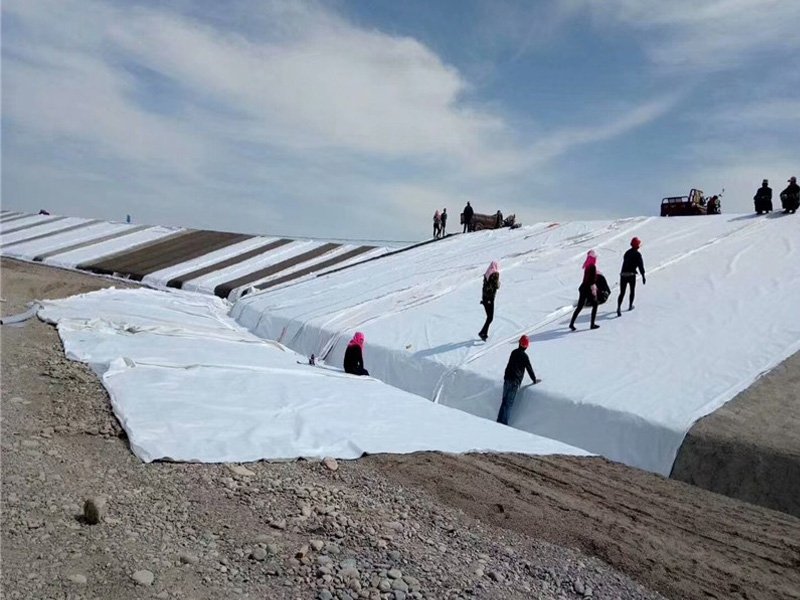
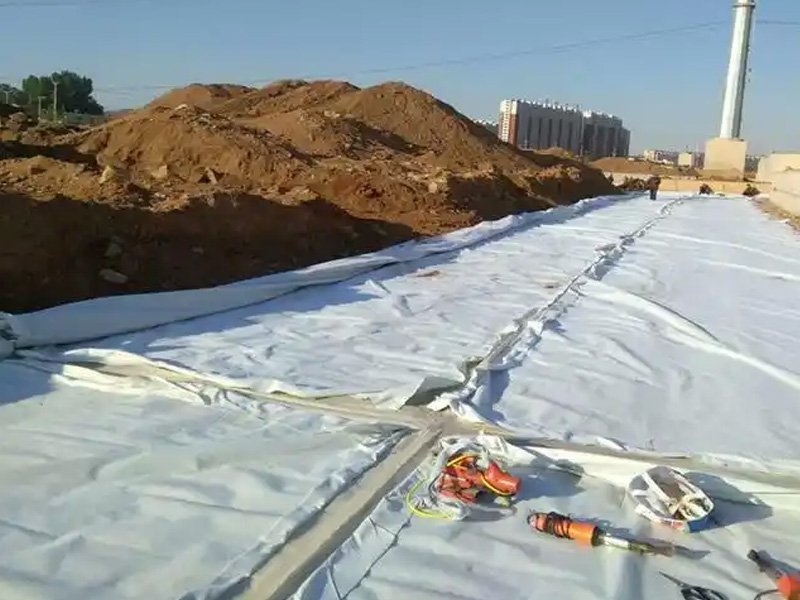
5. Main Considerations When Choosing Best Nonwoven Drainage Fabric
Selecting the best nonwoven drainage fabric requires careful evaluation of project-specific factors to ensure performance and cost-efficiency.
Project Requirements
- Drainage Needs: High-flow projects (e.g., French drains) require lightweight to medium-weight fabrics (120–150 gpm/ft²). A 2024 Canadian project used 6 oz fabric for 50% clogging reduction.
- Strength Needs: Heavy-duty applications (e.g., landfills, road stabilization) need heavyweight fabrics (300–425 lbs tensile strength). A 2024 U.S. landfill used 12 oz fabric for 50% puncture reduction.
- Application Type: Choose lightweight for landscaping (25% of projects), medium-weight for French drains (30%), or heavyweight for landfills (15%).
Environmental Conditions
- Soil Type: Clay soils need smaller AOS (0.1–0.3 mm) for 95% filtration; sandy soils allow larger AOS (0.4–0.6 mm). A 2024 Australian project used 8 oz fabric with 0.2 mm AOS for clay-heavy slopes.
- UV Exposure: Select UV-stabilized fabrics (70–90% strength retention after 500 hours) for exposed applications like erosion control.
- Chemical Exposure: PP fabrics resist 95% of pH 2–12 soils; PET is less durable in alkaline conditions.
Specifications
- Permeability: Ensure flow rates (100–150 gpm/ft²) match drainage demands. Lightweight fabrics (150 gpm/ft²) suit high-flow areas; heavyweight (75 gpm/ft²) for low-flow, high-strength needs.
- Tensile Strength: Match strength (80–425 lbs) to load requirements. Medium-weight (205 lbs) suits most drainage projects.
- Puncture Resistance: Heavyweight fabrics (850–1,200 N) are critical under riprap or geomembranes.
- Roll Sizes: Standard sizes (2–6.5 m width, 50–300 m length) reduce waste by 5–10%. Custom cuts increase costs by 10%.
Budget
- Cost Range: Lightweight ($0.15–$0.50/ft²), medium-weight ($0.50–$1.50/ft²), heavyweight ($1.00–$2.50/ft²). Bulk orders (>10,000 m²) save 10–20%.
- Long-Term Savings: Durable fabrics (50–100-year lifespans) reduce maintenance by 15–20%. A 2024 U.S. project saved $5,000 using 6 oz fabric for a French drain.
Supplier Reliability
- Certifications: Choose ISO 9001:2015 or AASHTO M288-compliant fabrics for <1% defect rates. Brands like Mirafi® and BPM Geosynthetics meet these standards.
- Reputation: Select suppliers with proven track records (e.g., TenCate, 20,000 tons/year capacity). Compare quotes to save 15–20%.
Installation Requirements
- Ease of Installation: Lightweight fabrics (3–5 oz) reduce labor time by 20% due to flexibility. Medium-weight (6–8 oz) balances ease and strength.
- Site Conditions: Uneven terrain requires high elongation (50–70%) fabrics like needle-punched nonwovens to prevent 50% of tears.
6. Is Nonwoven Drainage Fabric Effective to Let Water Through?
Yes, nonwoven drainage fabrics are highly effective for water passage, with flow rates of 100–150 gpm/ft² (ASTM D4491), making them ideal for drainage systems like French drains (30% of applications), retaining walls (15%), and subsurface drainage (20%). Their needle-punched or thermally bonded structure creates a three-dimensional pore network, allowing water to flow 25 times faster than woven geotextiles while retaining 90–95% of soil particles (0.1–0.6 mm AOS). A 2024 U.S. French drain project using a 6 oz nonwoven fabric achieved 130 gpm/ft² flow, reducing clogging by 50% and pooling by 60%. Lightweight fabrics (3–5 oz) offer the highest permeability (120–150 gpm/ft²), ideal for high-flow areas, while heavyweight fabrics (10–16 oz) provide 75–100 gpm/ft², prioritizing strength over flow. Key factors ensuring effectiveness include:
- Permeability: High flow rates (100–150 gpm/ft²) manage stormwater efficiently, reducing hydrostatic pressure by 50% in retaining walls.
- Filtration Efficiency: 90–95% soil retention prevents drain clogging, extending system life by 20–30 years.
- Installation Practices: Proper overlaps (12–18 inches) and 4–6-inch cover ensure 95% functionality by preventing sediment intrusion.
- Environmental Stability: UV and pH-stabilized fabrics maintain 70–90% performance after 500 hours of exposure, ensuring long-term drainage efficiency.
A 2024 Ohio trail project used a 6 oz nonwoven fabric to address drainage issues from heavy rains, achieving 95% water flow efficiency and stabilizing trails for 5 years. Compared to biodegradable alternatives, nonwoven fabrics last indefinitely underground, offering 15–20% cost savings over time.
7. Final Thoughts
Choosing the best nonwoven drainage fabric for drainage systems in 2025 requires balancing permeability, strength, and project-specific needs. Lightweight fabrics (3–5 oz, $0.15–$0.50/ft²) excel in high-flow landscaping and light drainage, offering 120–150 gpm/ft² flow rates. Medium-weight fabrics (6–8 oz, $0.50–$1.50/ft²) are versatile for French drains and road stabilization, with 100–140 gpm/ft² flow and 160–205 lbs strength. Heavyweight fabrics (10–16 oz, $1.00–$2.50/ft²) prioritize durability (300–425 lbs, 850–1,200 N puncture resistance) for landfills and heavy erosion control. Needle-punched fabrics dominate 80% of drainage applications due to their flexibility and filtration efficiency (95% soil retention), while thermally bonded options suit lightweight landscaping. Key considerations include matching flow rates (100–150 gpm/ft²) and strength to project demands, ensuring UV and chemical resistance (70–90% strength retention). Proper installation (12–18-inch overlaps, 4–6-inch cover) enhances performance by 95%, reducing maintenance costs by 15–20%. By selecting the right fabric and supplier, businesses can achieve 20–30-year system lifespans and 50% clogging reduction, ensuring reliable drainage for 2025 projects.
Any questions or inquiries, please contact BPM Geosynthetics.

